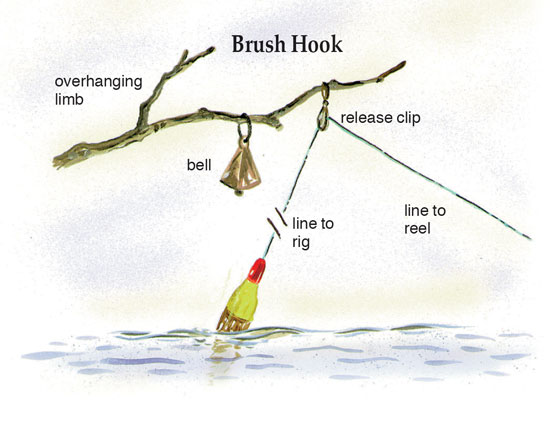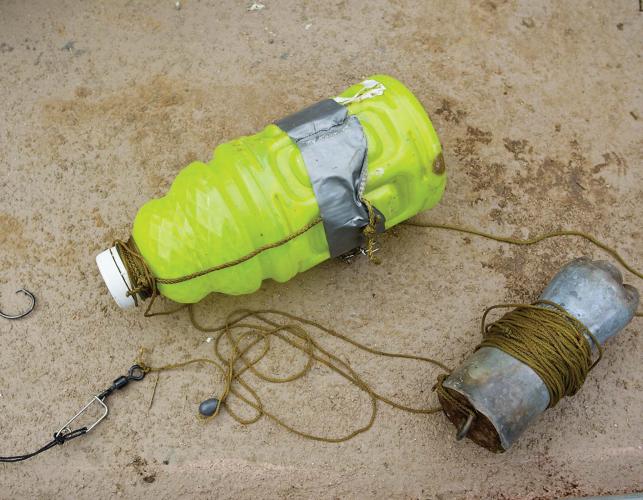
Jug Lines: A Time-Honored Technique for Successful Fishing
Introduction
Fishing has been a beloved pastime for centuries, offering both relaxation and excitement to anglers of all ages. While traditional rod-and-reel fishing remains popular, there are various techniques that cater to different preferences and environments. One such technique that has stood the test of time and continues to lure in enthusiasts is jug line fishing. In this article, we will explore the fascinating world of jug lines, their history, benefits, and how to set up your own jug line for a rewarding fishing experience.
The History of Jug Lines
Jug lines, also known as jug fishing or jug lining, have a long and storied history. This fishing method originated in the southern United States, particularly in regions with abundant freshwater bodies like lakes, rivers, and reservoirs. It gained popularity as an efficient and low-cost way for anglers to catch fish in large quantities. The basic idea is to use floating jugs, often made from plastic bottles, to suspend baited hooks at various depths in the water.
The appeal of jug lines lies in their simplicity. Anyone, from beginners to seasoned anglers, can set up and use jug lines with minimal equipment and hassle. The method’s history is deeply rooted in tradition, and it remains a popular choice for those looking for a unique and productive fishing experience.
Setting Up Your Jug Lines
1. Select the Right Jug:
To begin, gather some plastic jugs or bottles. The most common choice is a 2-liter soda bottle, but any buoyant container will work. Ensure they are clean and free from any residue.
2. Rigging Your Jugs:
Attach a sturdy fishing line to each jug’s neck, making sure it’s long enough to reach the desired depth in the water. You can use monofilament or braided line, but a 20-30 pound test line is generally sufficient.
3. Bait Your Hooks:
On the end of each fishing line, tie a hook. The type of hook and bait you use will depend on the fish you’re targeting. Common bait choices include worms, cut bait, or live baitfish.
4. Weighting the Line:
To keep your lines submerged, add a weight to the fishing line above the hook. Egg sinkers or split-shot sinkers are commonly used. The size of the weight depends on the depth you intend to fish.
5. Attach a Float:
To make your jug visible on the water’s surface, attach a brightly colored float to the line above the weight. This will allow you to spot your jugs easily and retrieve your catch.
6. Deploy Your Jug Lines:
Head out to your chosen fishing location, whether it’s a lake, river, or pond. Scatter your jug lines at various distances and depths. Keep an eye on them as they float on the water’s surface.
7. Patience is Key:
Jug line fishing often requires patience. It may take some time for fish to discover your bait, so be prepared to wait patiently for the action to start.
Benefits of Jug Line Fishing
1. Minimal Investment:
Jug line fishing is an economical way to fish. You don’t need an expensive boat or high-tech gear, making it accessible to a wide range of anglers.
2. Great for Large Hauls:
Jug lines are known for their ability to catch multiple fish at once. This makes them an excellent choice for those looking to bring home a substantial catch.
3. Versatility:
Jug lines can be used in various water bodies, from small ponds to large rivers. They are versatile and adaptable to different fishing conditions.
4. Simplicity:
Setting up jug lines is straightforward, making it a fantastic choice for beginners or those who prefer a no-fuss fishing experience.
Conclusion
Jug lines offer a charming blend of tradition, simplicity, and efficiency in the world of fishing. Whether you’re an angler looking to try something new or a beginner wanting to dip your toes into the fishing world, jug line fishing can provide a rewarding experience. Remember to check local regulations and guidelines before heading out, and always practice responsible fishing to protect our aquatic ecosystems. So, grab your jugs, bait your hooks, and set off on a fishing adventure that connects you with the time-honored practice of jug line fishing.


